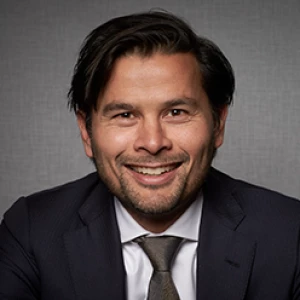Contact centers are associated with frustration and futility, a loopy parade of calls passing from one agent to another that draws out the process of responding to customer inquiries. It doesn’t have to be that way. Organized properly, contact centers can strengthen ties with customers and enhance a brand. To make the shift, organizations must reorient the mission of these centers and the ways that they work.
Contact centers should be treated as strategic assets. In a digital world, the contact center is one of the dwindling number of places where companies can make a human connection with their customers. In the case of banks, for instance, customers generally visit branches far less often than they call.
To become a strategic asset, these centers must work in new ways. Rather than repeatedly passing customers off from one specialist to another, they should seek to satisfy and even delight them. Working with BCG, several organizations have discovered that the best way to do this is through agile and lean principles that:
- Provide end-to-end servicing through multidisciplinary teams that are trained to solve all incoming requests and accountable for doing so, to minimize the use of specialist teams to which so many calls often get bounced.
- Grant teams autonomy in helping customers, to reduce the need for middle managers and encourage experimentation, while increasing employee satisfaction and reducing churn.
- Measure success on the basis of customer satisfaction and team metrics rather than average length of call, thereby improving the experience for employees and customers and enhancing efficiency.
These changes can have dramatic effects. One bank cut costs by more than 25%. Another company kept costs the same but improved its customer loyalty score by 20 points. They work just as well at global financial institutions with 20,000 call agents or regional utilities with just 200.
To achieve these results, though, companies cannot attack customer service in a piecemeal way. They need to put the customer at the center of their way of working and operating model, a shift that requires a radical rethink of processes, culture, compensation, incentives, training, and promotion.
Companies need to put the customer at the center of their way of working and operating model, a shift that requires a radical rethink of processes, culture, compensation, incentives, training, and promotion.
The Traditional Contact Center Is a Bad Look for Customer Service
Companies have traditionally treated contact centers as a factory in which they aim to slice up the incoming calls into narrow categories handled by specialists. They grade these employees on how much time they spend on a call—the less time the better. This setup encourages the frequent handing off of calls from specialist to specialist.
Many companies also separate the customer-facing contact center from the process-oriented back office, creating yet another handoff. The legacy technology and siloed data in many of these centers also frustrate efforts to create a fully multichannel experience for customers.
Contact centers cannot wholly eliminate specialization. Certain requests require specific training and accreditation that a generalist cannot handle. But specialization should be the exception.
Paradoxically, the emergence of digital self-help channels has made matters worse for contact centers. Customers can turn to online or chat channels to solve easy problems, leaving the thorniest requests for the contact center, and many of these requests fall between the cracks of the contact center specialties.
Paradoxically, the emergence of digital self-help channels has made matters worse for contact centers.
Adding to these problems, the contact center can often become a repository for calls that originate in misaligned incentives in the rest of the organization. For example, a bank might create a mobile app without the ability to replace a lost card online because the development team’s incentives do not reward reducing contact center volume.
Similarly, the marketing teams may not be encouraged to design campaigns and offers that minimize call center usage. In both cases, the result is a contact center flooded with avoidable calls.
A Better Way to Serve
If the metaphor for the traditional contact center is an assembly line, the next-generation contact center operates more as a hive. Employees are broken into multidisciplinary teams responsible for end-to-end servicing of inquiries. Trained in handling more than one type of request, employees have a greater sense of ownership, purpose, and influence. As self-directed units, the teams can experiment with new approaches without running a gauntlet of approvals.
Performance is evaluated on the basis of customer satisfaction at the team, rather than individual, level, which builds culture and collaboration. When this shift away from efficiency occurs, average time per call generally edges upward but eventually settles back to normal levels. The difference is that customer satisfaction scores stay high.
A large global bank that is in the process of shifting its customer service to this way of working has seen positive effects already. It is setting up multidisciplinary teams capable of servicing any request—from onboarding to collections and delinquency—from specific customer segments. About 60 niche teams have been collapsed into one end-to-end team and just a handful of specialty teams. Early results show a drastic reduction in call transfers, more rapid and effective resolution, and higher employee satisfaction.
By making people responsible for customer outcomes instead of tasks, the bank was able to cut waste and inefficiency. Rather than impose a top-down solution, bank executives created the context that unleashed the power of people to do their best work.
Agile emerged in the software industry as a way to respond to the inefficient waterfall method of development in which each group waits for a prior group to hand off its work. It turns out that many industries and parts of organizations have their own versions of the inefficient handoff. Customer service may be the next spot for agile to work its magic.











